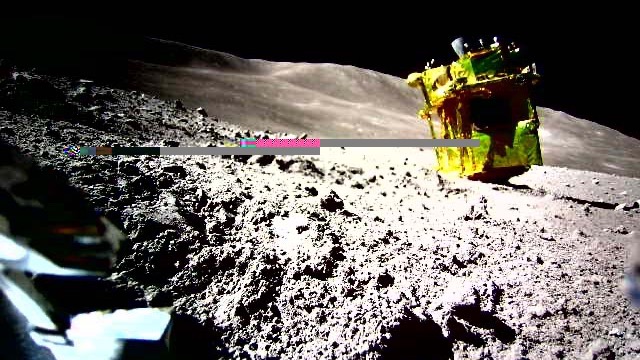
Japan’s Smart Lander for Investigating Moon, or SLIM, reestablished communication with Earth, the Japan Aerospace Exploration Agency announced. Despite the spacecraft not being expected to survive the harsh conditions of the lunar night, contact was made on February 25, offering a glimmer of hope for the mission’s continuation.
Launched with the ambition of conducting high-precision lunar exploration, SLIM, also known as “Moon Sniper,” achieved a historic landing on January 19, placing Japan among an elite group of nations and entities that have successfully completed robotic lunar soft landings. However, this achievement was somewhat marred by an unfortunate landing posture due to an engine failure during descent, which limited the craft’s operational capabilities.
SLIM’s reconnection with mission control was brief, with telemetry received around 5 a.m. EST indicating extremely high temperatures in the communication equipment. This was attributed to the Sun’s position over the landing area, forcing the termination of the communication shortly after it was established.
Despite this setback, the SLIM team attempted to use the lander’s multiband spectroscopic camera (MBC) to analyze the lunar surface composition, potentially providing valuable insights into the Moon’s history before sunset over Shioli crater, which occurred March 1. However, JAXA said it did not work properly, possibly due to the effects of lunar night.
Join our Discord Server: Join the community with forums and chatrooms about space!
The spacecraft’s survival through a lunar night, where temperatures plummet below minus 130 Celsius, was highly unexpected. SLIM was not equipped with a radioisotope heater unit, which is typically found in other spacecraft designed for prolonged lunar night operations. Following sunset March 1, the spacecraft went dormant again. It’s unclear whether the spacecraft will survive a second lunar night.
SLIM’s journey has been fraught with challenges, including the aforementioned landing difficulties. The lander’s final descent was complicated by the failure of one of its engines, leading to an uncontrolled lateral movement and the spacecraft ending on its nose with its main engine pointing upward.
Despite these challenges, SLIM managed to deploy two innovative rovers, LEV-1 and LEV-2, onto the lunar surface. These rovers have already performed their exploration tasks, with LEV-1 transmitting images back to Earth, showcasing the innovative inter-robot communication capabilities and revealing the lander’s condition.
The SLIM project manager, Shinichiro Sakai, has confirmed that a detailed investigation into the engine malfunction is underway, with the aim of implementing future countermeasures. This experience, while challenging, is expected to enhance the precision landing technology for future missions aiming for targeted exploration of specific lunar locations of interest, according to the Japanese space agency.
FTC: We use income earning auto affiliate links. More.




Comments